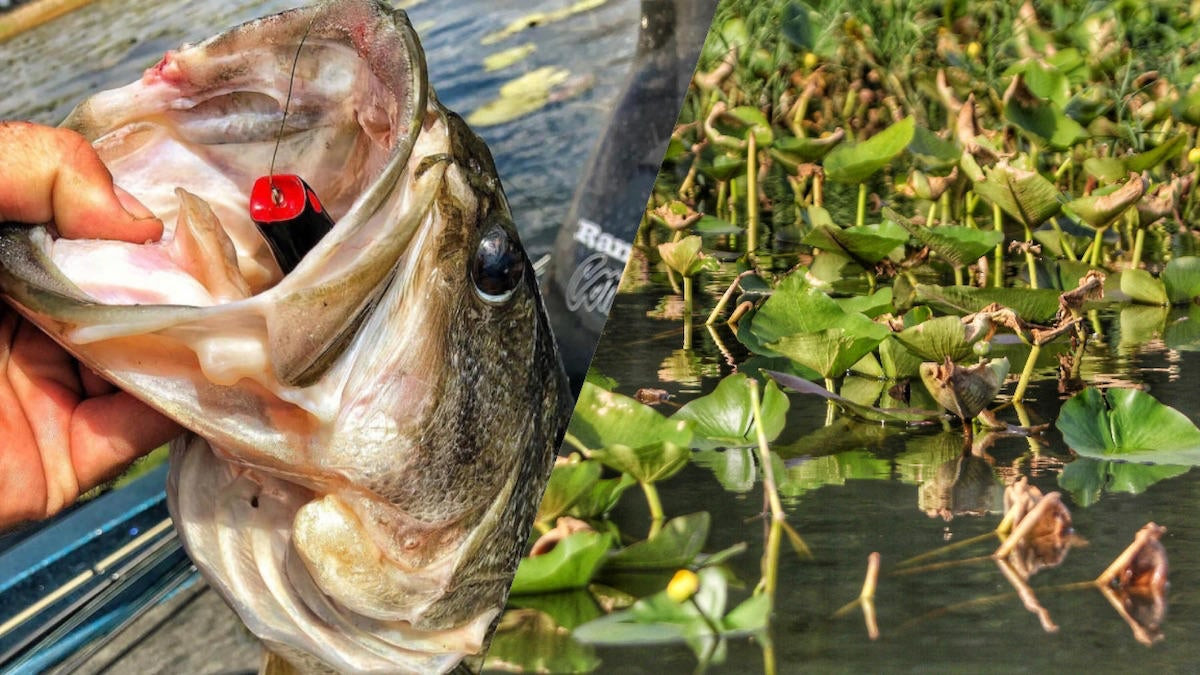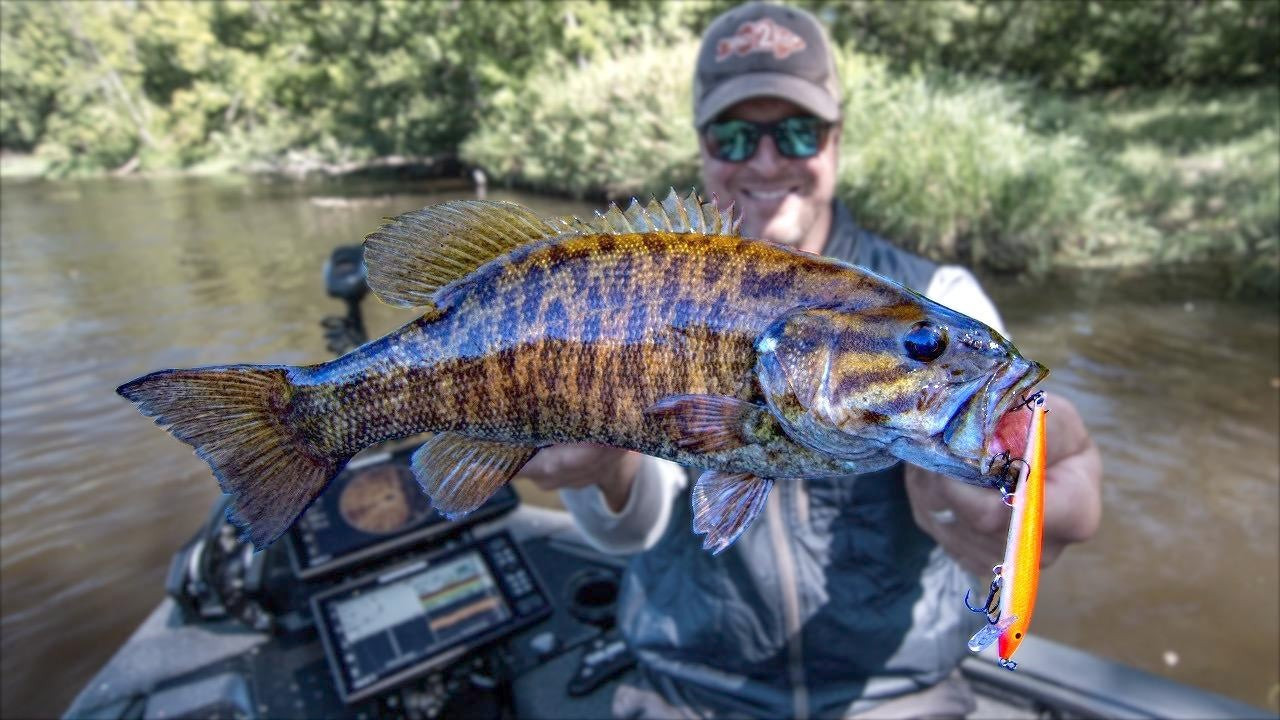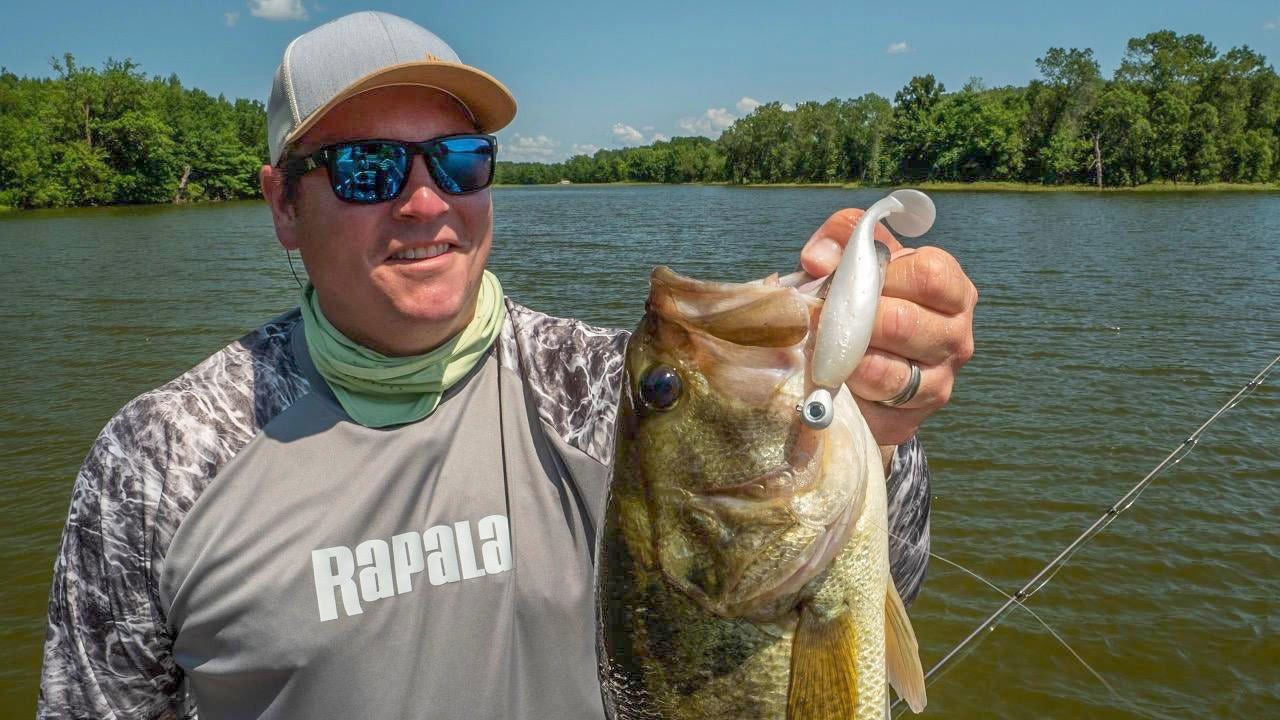Lily pads offer great bass fishing habitat year round. In the summer months, their broad leaves offer crucial shade to cool the shallow, smoldering waters. Even in the winter and early spring when the leaves have withered away and only the pad stems remain, those stems can still be used to differentiate bottom composition and help anglers locate areas with hard bottoms during the spawn.
However, when the pads are flourishing in the summer they can be thick and a little tricky to fish. And you don’t want to fish small patches of pads the same way you’ll fish vast fields. You’ll also run into situations where there are other types of vegetation mixed in with the pads and you’ll want to approach those situations differently as well.
To better break down lily pad fishing, here are 5 techniques to deploy on your local fishery.
Hollow body frog
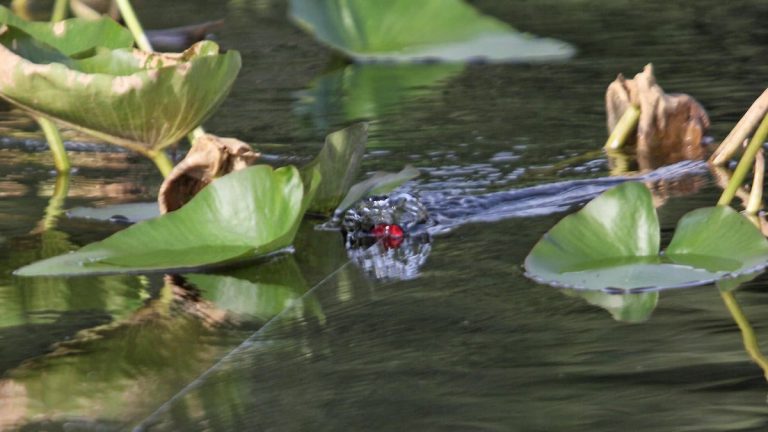
Perhaps the most obvious bait for this type of fishing is the hollow body frog, so we’ll start there. Pads can be extremely thick, so having a fairly weedless bait like a hollow body frog makes a big difference. Most anglers, including myself, will bend the hooks up slightly on a frog to increase the hookup ratio. You have to be careful not to bend them too much though in any situation, but especially when fishing pads as you lose some of a frog’s weedless characteristic the further you bend the points up.
I’ll go with a hollow body frog first when I come to thick pad fields with holes in them. Often times in those situations, the pads are too thick to fish anything through them and the fields are too vast to invest the time it would take to flip it all. Throwing a hollow body frog into one of the holes allows you to work something slowly through a small window and create enough noise to lure a fish in from far away. I’m also a big fan of a hollow body frog when fishing a field with a lot of the smaller dollar lilies mixed in.
Both popping and walking style hollow body frogs work great in pads and I’ll often have both tied on and just let the fish tell me what they want. There are some days where the aggressive action of a SPRO Bronzeye Poppin’ Frog 60 is what they want. And then other days I’ll gravitate towards the more finesse Strike King KVD Sexy Frog.
Toad
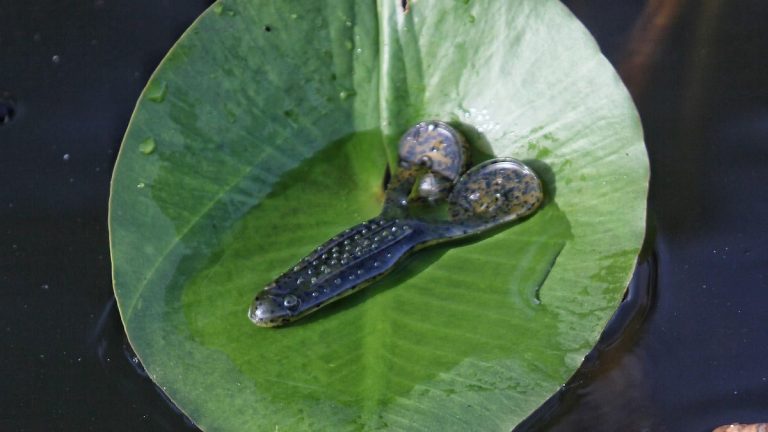
Another great bait that comes in near the top of the list for most anglers looking for something to throw in pads is a toad. I like reeling a toad through pads as well. It gives you a great weedless option that creates a lot of noise and helps you cover a lot of water. But, you will run into situations where the fish are short striking a toad a lot and that’s when I’ll typically fall back to the hollow body frog.
Because you have to keep the bait moving, it’s better for thinner pad fields or fishing the hard edge of a thicker field. I’ll use one of 3 different toads: Strike King Rage Toad, Zoom Horny Toad and Stanley Ribbit. All three of these baits create a slightly different sound and I’ve found over time that they’ll all work better in certain situations.
I really like the dull, deep chug of a Ribbit around the spawn. The Horny Toad has a sharper, faster clap to it that works really well in the heat of the summer and the Rage Toad is the loudest of the three so it’s the one I’ll go too in particularly low light or muddy water situations. When fishing pads, the louder Ribbit and Rage Toad have more drawing power, but still there are some days when the bass won’t commit to those in the summer and you have to back off to the quieter Horny Toad.
Inline buzzbait

This is a lesser known deal, but one I really like for fishing lily pads. There are a few different baits like this out there, but the one I use is a Stanley Ribbit Buzzit. I think my buddy Tom Frink first put me onto this bait several years ago. I was fishing the B.A.S.S. opens back then and one of the first few tournaments I fished after he showed it to me was Ross Barnet, a fishery loaded with lily pads and this bait had me in 11th or so after the first day.
The Buzzit allows you to rig a soft-plastic weedless on a buzzbait and present something different to bass in thick vegetation. I’ll actually go with a soft-plastic swimbait like the Missile Baits Shockwave or Reaction Innovations Skinny Dipper in place of the Ribbit that comes with it. There are two reasons: The swimbait comes through the thicker stuff a little better and I really like how the tail of the swimbait will stay slightly below the surface instead of riding back to the surface like the legs of a toad will.
Having the tail and most of the body of the swimbait just a little below the surface has a huge impact on the hookup ratio. The fish not having to come all the way out of the water to get its mouth around the bait really seems to cut down on the short strikes. And if you do have a fish wake up on the bait, you can slow your retrieve just a little and let the fish take the bait while still keeping the prop turning and maintaining the action.
When you slow a toad down, the legs dip below the water and the sound changes and that’s just enough to cause a bass to second guess it’s prey and turn off. It may seem a bit much to think a bass can be that picky, but I’ve seen it happen several times.
Flipping a soft plastic

Flipping can be really effective in lily pads, but it can also be extremely time consuming. Some guys will flip pads all day and do really well at it. But I’ll typically only flip in certain situations or if I’ve already had a few bites on something else in an area.
Mixed vegetation is one of the situations where I will slow down and flip, especially if the other type of vegetation is thick. Flipping or even punching mats of hyacinth or hydrilla that are caught up in lily pads is one of my favorite ways to catch fish. Typically there will only be a few mats like this and that will turn a vast lily pad field into a small set of targets.
It’s also a good idea to flip when you find an area with small patches of pads instead of a vast field. If you had the time to fish a whole field, flipping would most likely catch more fish than a topwater or any other type of bait. A light Texas rig is an easier meal and less intimidating than a topwater. But with those vast fields, it’s often just not feasible to flip them for hours on end and you have to swap over to something you can cover more water with.
But knowing the effectiveness of flipping a soft plastic, you can see why it’s a good selection for those isolated clumps of pads. You don’t have to worry about hitting a fish right on the nose with it or drawing it’s attention from far off. I’ll typically go back and forth on this setup between a soft-plastic stick bait like the Strike King Ocho for the thicker pads and isolated patches and a Strike King Rage Craw when fishing in the sparser pads where I want to kind of flip and swim something. Which leads to our fifth and final presentation.
Swim jig

In those sparser fields where the pads are spaced a couple feet apart, a swim jig gives you a great bait that can still call fish in fairly well in the thinner cover but also do it in a more subtle, subsurface way. Most of the time, if you can fish a bait effectively below the surface at the same pace as you can a bait on the surface, you’ll get more bites on that subsurface bait.
When you do get a bite in pads, it’s often a battle to get the fish out. You’ll want a jig with a strong hook. I really like the 3/8 ounce Dirty Jigs No-Jack Swim Jig for that reason. It has a big, beefy hook that doesn’t bend. Adding a Rage Craw to the back is great for the sparser vegetation. If the pads and other cover get a little thick, I’ll back down to a Strike King Menace Grub or a Missile Baits Shockwave in the 3 1/2-inch version.
It’s a good idea to have the swim jig on deck anytime you’re fishing pads to use as a follow up bait as well. If you have a fish short strike a frog or toad, take the swim jig and fish it back through the same cast and you’ll often catch the fish. If you have a few fish short strike a frog in an area, it’s usually a good idea to swap over to the swim jig entirely.
In conclusion

Fishing vast lily pad fields can seem like a daunting task. But if you pay close attention to where you’re getting bites, little patterns will start to form. And don’t overlook the smaller, isolated patches of pads as those are often where big ones lie in wait ruling the roost. With all of these presentations save one, braid and fairly heavy gear are key. The braid cuts through the pad stems on the fight and gives you the best chance at getting your fish to the boat.
The one instance where fluorocarbon comes into play, flipping. In certain clear water situations or particularly sparse pads, you’ll find you can get a few more bites with flouro than braid when flipping a Texas rig. But if the water clarity or thickness of the vegetation will allow for it, I still prefer braid most of the time. There’s no point getting bit if you can’t get the fish to the boat.
Test these presentations out on your local stretch of lily pads and see if you can’t discover a new honey hole.





